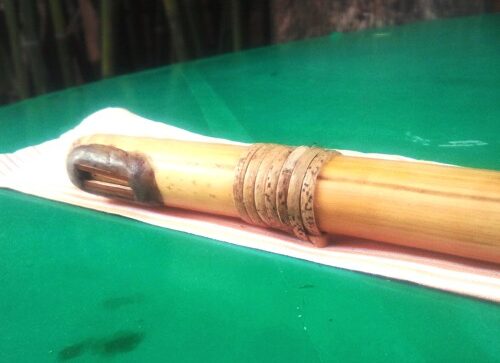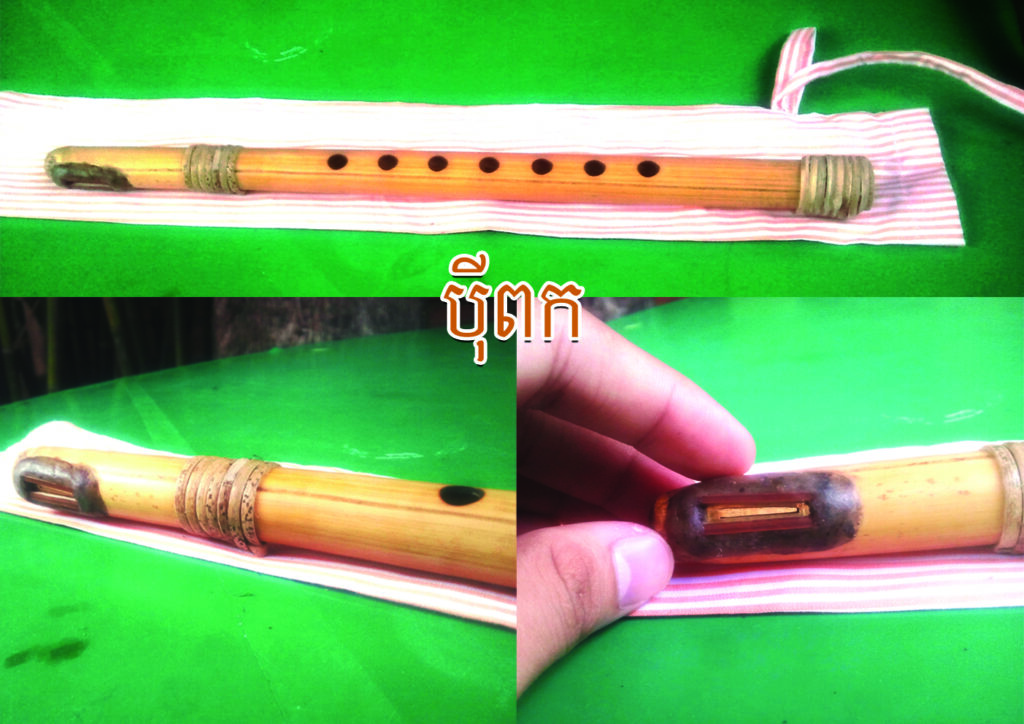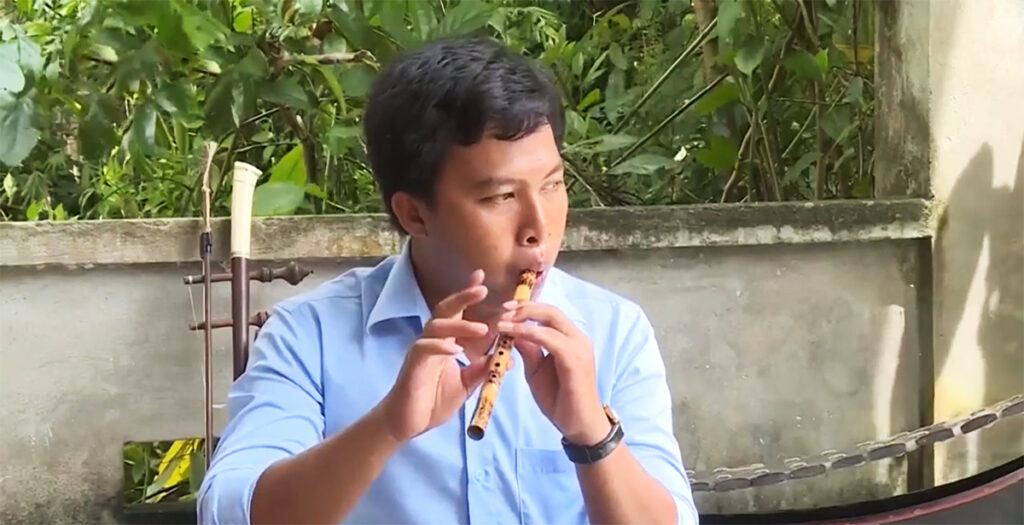ឧបករណ៍តន្ត្រីគ្រឿងផ្លុំដែលមានអណ្តាតនៅប្រទេសកម្ពុជា រួមមាន អណ្តាតមួយឬមួយស្រទាប់ (គឺស្នែងនិងប៉ីពក) អណ្តាតពីរឬពីរស្រទាប់ (គឺប៉ីបបុស ប៉ីប្របុស ឬប៉ីអរ) និងអណ្តាតបួនឬបួនស្រទាប់ (គឺស្រឡៃ)។
ឧបករណ៍ ប៉ីពក ជាឧបករណ៍ដែលគេផ្លុំពីជំហៀង ប្លែកពីឧបករណ៍ឯទៀតដែលគេផ្លុំពីមុខ។ តួរបស់វា ជាទូទៅ ធ្វើអំពីឫស្សីមួយប្រភេទមានឈ្មោះថា “ពក” ដែលគេប្រសិទ្ធនាមដល់ឧបករណ៍តន្ត្រីនេះ។ ប៉ីពកមានរន្ធម្រាមដៃ៧ និងរន្ធមេដៃ១។ អណ្តាតប៉ីពកធ្វើពីសំរឹទ្ធឬដែកថែប ដោយដាក់បង្កប់នៅក្នុងបំពង់ពកប្រមាណ ២.៥ សង់ទីម៉ែត្រ ពីខាងចុងនៃតួឧបករណ៍។ ចម្ងាយសំឡេងរបស់ប៉ីពក មានប្រមាណប្រាំបីសំឡេង។


ស្រដៀងនឹងឧបករណ៍ “ស្នែង” ដែលជាឧបករណ៍គ្រឿងផ្លុំ មានអណ្តាតមួយឬមួយស្រទាប់ដូចគ្នាដែរ គេប្រើ “ប៉ីពក” នៅក្នុងវង់ភ្លេងអារក្ខ ដើម្បីអន្ទងអញ្ជើញព្រលឹងឲ្យមកសណ្ឋិតនិងមានវត្តមាននៅក្នុងពិធី។ យើងក៏អាចឃើញមានឧបករណ៍ ប៉ីពក ប្រើនៅក្នុងវង់ភ្លេងអាពាហ៍ពិពាហ៍ ដើម្បីអញ្ជើញមេបានិងព្រលឹងបុព្វជនឲ្យមកចូលរួមនៅក្នុងពិធីអាពាហ៍ពិពាហ៍នេះដែរ។ នាសម័យដើម យើងក៏មានឃើញគេប្រើឧបករណ៍ ប៉ីពក ជំនួសឧបករណ៍ “ស្នែង” នៅក្នុងពិធីទាក់ដំរី ដើម្បីអញ្ជើញគ្រូមកប្រសិទ្ធពរជ័យដល់ហ្មដំរីមុននឹងចេញទៅទាក់ដំរី។ សព្វថ្ងៃ “ប៉ីពក” ត្រូវបានគេលេងជាឧបករណ៍ទោល ឬដើម្បីកំដរអ្នកច្រៀងតែប៉ុណ្ណោះ៕

—————————–
PEY PORK
Aerophones with reeds found in Cambodia include single-, double-, and quadruple-reeds; they are the single free-reed snaeng or animal horn, pey pork or single free-reed pipe, pey babaus (also pey prabaus or pey ar) or double-reed pipe, and sralai or quadruple-reed shawm. Among the single free-reed aerophones is the pey pork, a side-blown single free-reed pipe. The body is made of, generally, bamboo called “pork” from which it takes its name. There are seven fingerholes and one thumbhole. The reed is made of bronze (similar to that of the Western harmonica) and placed in a hole approximately 1 inch from the end of the body. The range of the pey pork is a little over an octave.
Similar to the snaeng or animal horn, also single free-reed but made of bamboo, pey pork is especially used in the arakk or worship of spirit ensemble to invoke and invite spirits to come and be present in a ceremony. One may also find pey pork used in the Khmer wedding ensemble to invite the elderly and the spirits of ancestors to the wedding ceremony (Keo 2011: 64). In the olden days, pey pork, in place of snaeng, may also be played to invite spirits to bless the elephant-hunters before leaving for their elephant-hunting expedition (ibid.). Today, pey prok is more confined to be played as a solo instrument or to accompany vocalists.
អត្ថបទដោយ៖ បណ្ឌិត សំ សំអាង






